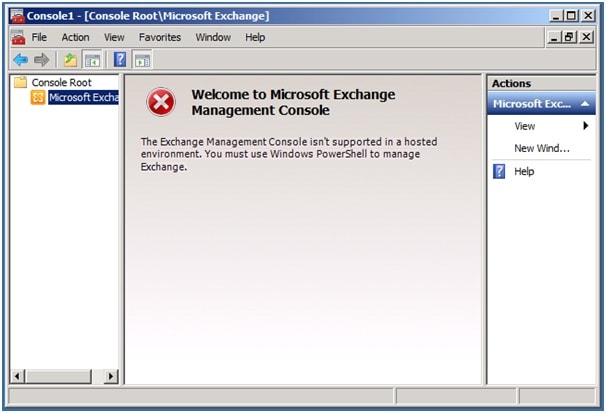All users in your Exchange organization are automatically listed in the Global Address List. When you have multiple departments, or maybe multiple companies (sometime also referred to as organizations, but this has nothing to do with the Exchange organization) in your Exchange organization you may want to organize or split up the Address List. When you do this appropriately each department or company will have its own Address List, and each Address List is only visible for users belonging to this particular company. Users will never notice other companies are hosted on the same Exchange Organization.
In Exchange Server 2007 this is not too difficult to accomplish. Microsoft has released a whitepaper on how to configure virtual organizations (i.e. companies) in Exchange Server 2007. This whitepaper can be found on the Technet Website: http://technet.microsoft.com/en-us/library/bb936719(EXCHG.80).aspx – Configuring Virtual Organizations and Address List Segregation in Exchange 2007.
It is tempting to try this in Exchange Server 2010 as well, but you would be best off avoiding doing so. There are a couple of issues (that Microsoft is working on) that will block a successful rollout of Address List Segregation. Besides that, it is not supported and it will also break Exchange Server 2010. More information regarding this can be found on Dave Goldman’s weblog: http://blogs.msdn.com/b/dgoldman/archive/2010/05/10/critical-update-exchange-2010-address-list-segregation-and-current-support-stances.aspx – CRITICAL UPDATE – Exchange 2010 Address List Segregation and Current Support Stances
You may be aware that in Exchange Server 2010 SP1 there’s a /hosting switch, making Exchange Server 2010 SP1 “multi tenant”. This means you can create multiple virtual organizations in Exchange Server 2010 SP1, completely invisible for each other. There’s already quite some information on the Internet regarding installation of Exchange Server 2010 SP1 with the /hosting switch, but most of this information is not coming directly from Microsoft!
This “hoster edition” of Exchange Server 2010 SP1 is targeted towards hosting companies, companies that currently have HMC (Hosted Messaging and Collaboration) 4.5 running. This is basically the Hosted Version of Exchange Server 2007, including Hosted Sharepoint and Hosted OCS. This implementation of Exchange Server 2010 is absolutely not targeted towards enterprise customers!
There are a number of issues you have to be aware of when you want to deploy the “hoster edition” of Exchange Server 2010 SP1:
- You need an SPLA (Service Provider License Agreement) to use this version of Exchange Server 2010 SP1;
- The Forest Functional level is Windows Server 2008;
There is:
- No upgrade path (only a green field scneario);
- No support for Unified Messaging;
- No support for Edge and EdgeSync;
- No support for multiple forests;
- No support for multiple domains;
- No Exchange Management Console;
- No Public Folders;
- No Federation;
- No B2B features such as cross-premises message tracking and calender sharing;
- No IRM;
- No Outlook 2003 support (EnableLegacyOutlook);
- No Support for OCS 2007 R2, only from 3rd party;
- No Support for CRM;
When you try to start the Exchange Management Console you’ll see that it is not supported: 
So, all configuration has to be done using the Exchange Management Shell. There’s some additional self service support on the Exchange Control Panel, but basically you’ll need to implement another 3rd party Control Panel for configuring the Exchange organization. Or create your own Control Panel. Please bare in mind that hosting companies often have dedicated developers that are working on these scenarios.
Conclusion
If you want to implement Address List Segregation on Exchange Server 2010 you cannot use the 2007 version of the Address List Segregation whitepaper. It will break Exchange Server 2010. Although very tempting to use, the Hoster Edition of Exchange Server 2010 SP1 is not an alternative for the enterprise customers. Don’t try it, don’t even think about it, there’s too much complexity for the average enterprise customer. Besides the Service Provider licensing, there’s too much functionality that’s not supported by Microsoft directly, or it is supported by a 3rd party. The best option is to wait and see if and when Microsoft releases the 2010 version of the Address List Segregation.



Load comments